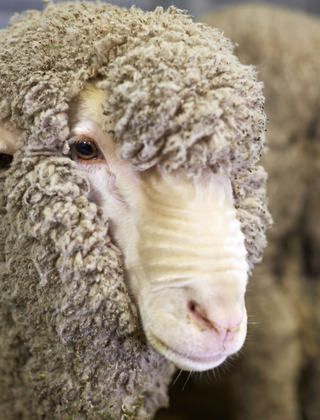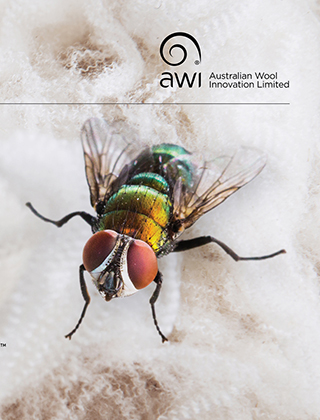Riding the ‘perfect’ Australian wave

Flies thrive in warm, wet conditions. So, with higher-than-average rainfall forecast for much of eastern Australia this spring, there is potentially a greater than usual flystrike risk. Now is the time to implement your annual flystrike management plan – and if you haven’t got one, it is best to develop one quickly because a wave of blowflies could soon be on its way.
Flies thrive in warm, wet conditions. So, with higher-than-average rainfall forecast for much of eastern Australia this spring, there is potentially a greater than usual flystrike risk. Now is the time to implement your annual flystrike management plan – and if you haven’t got one, it is best to develop one quickly because a wave of blowflies could soon be on its way.
As the days heat up and the spring storms roll in, blowfly (Lucilia cuprina) larvae are beginning to emerge from the ground. Temperatures of more than 17˚C increase fly activity following winter hibernation. Low to moderate wind speeds and a moist fleece create optimal blowfly wave conditions. As the blowfly lifecycle is 2.5–3 weeks in warm weather, woolgrowers can expect to see blowfly populations boom three weeks after a significant spring or summer storm.
Early prevention of flystrike is key to minimising welfare and economic threats, so it’s now time to start your annual flystrike management plan.
Key components of your plan should consider:
1. Time of crutching, shearing and lambing
The time of lambing is arguably one of the most significant husbandry decisions any woolgrower will make. Depending on the system, there will be different risk factors including:
a. Autumn lambers will need care over the joining period and weaned lambs will need care into their first spring. In this system, woolgrowers also need to consider the rams – if you are shearing rams pre-joining, do this at least six weeks prior to ensure semen quality is not affected by handling.
b. Spring lambers will need care over the lambing period and lambs may need care into the autumn.
It is advisable to discuss labour availability with your shearing contractor if you are considering changing your time of shearing or crutching, or increasing the frequency of shearing.
2. Breech modification and tail docking length
Many woolgrowers are now looking at what is required to reduce their reliance on mulesing and options for the provision of analgesia and local anaesthesia in the interim. Considerations for reducing the reliance on mulesing include your flystrike risk intensity and period, the susceptibility of your current flock, what breeding objectives your flock needs to achieve to suitably reduce the risk, and chemical and physical management tools that can be implemented to reduce risk during peak blowfly seasons.
For more information on how to reduce the reliance on mulesing, visit the FlyBoss website www.flyboss.com.au. It is highly recommended to work with your local veterinarian to help you plan your flystrike control strategy.
Analgesia and local anaesthetics are now widely used for mulesing and, in Victoria, a legislative requirement.
The main types used for castration, tail docking and/or the mulesing procedure are local anaesthetic (Tri-Solfen® and NumOcaine®) and analgesic non-steroidal-anti-inflammatories (NSAID) (meloxicam products, such as Metacam® and Buccalgesic®). Local anaesthesia generally has a more rapid onset, but the length of duration or action is less than a NSAID. In trials it has been established that using both a local anaesthetic and a NSAID increases the amount and duration of relief from pain. It is recommended to discuss your flock’s analgesia options with your local veterinarian at least two to four weeks prior to your planned lamb marking.
Care in the tail docking length is important. Long tails can contribute to stain around the breech and subsequent flystrike risk, whereas short tails can contribute to animal welfare issues including rectal prolapses and cancers. The recommendation is to dock the tail immediately below the third palpable joint, or ensure the healed tail just covers the vulva in ewes.
3. Select rams with low breech wrinkle, breech cover and dag
Selection for lower wrinkle, dag and cover in both rams and ewes will reduce the risk of breech strike, and is a practical step that you can take this year when choosing rams to purchase.
For more information, see the Breeding and Selection section on FlyBoss (www.flyboss.com.au).
4. Managing dags and stain
Dags are a major risk factor for breech flystrike, especially in winter rainfall dominant areas. Practical steps you can take this spring include well timed crutching to avoid dags, crutching sheep with dags, managing worm burdens by completing a WormTest (also known as a Worm Egg Count Test) and, if required, a strategic drench, and optimising nutrition to reduce scouring.
For more information on WormTests visit WormBoss (www.wormboss.com.au).
5. Preventative chemicals
Before choosing what product to use and when to use it, it is important to determine when your high-risk flystrike periods are, how the timing of shearing and crutching reduces the risk and length of your risk periods, when you may need to sell or shear sheep (withhold periods) and what application method suits your system best. The FlyBoss website has an interactive decision-support tool into which you can input your geographical location, shearing and crutching dates and product choices, to visually model your flock’s flystrike risk. The tool is available via the homepage of FlyBoss (www.flyboss.com.au).
AWI has produced a webinar and associated fact sheets which provide flystrike advice to woolgrowers managing their flock under high-risk fly conditions. The It’s Fly Time! webinar recording is available to view online for all woolgrowers across the country. The webinar provides tips for preventing flystrike, information on prioritising sheep for monitoring and treatment, and options for treating sheep when flystrike does occur. See the AWI website at www.wool.com/flystrikeresources to access the resources.
More information: www.flyboss.com.au
This article appeared in the September 2021 edition of AWI’s Beyond the Bale magazine. Reproduction of the article is encouraged, however prior permission must be obtained from the Editor.














